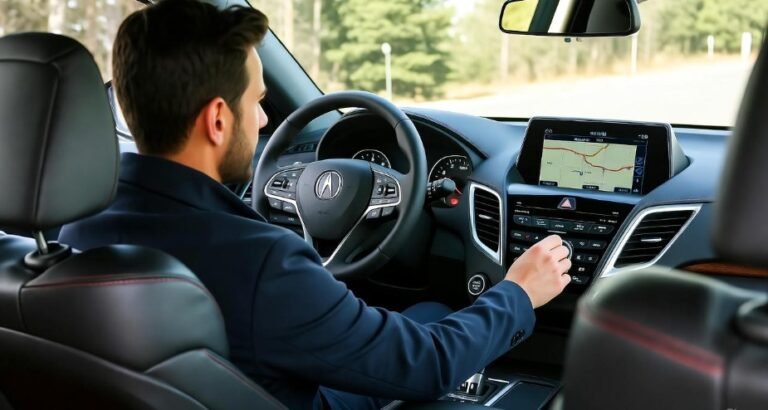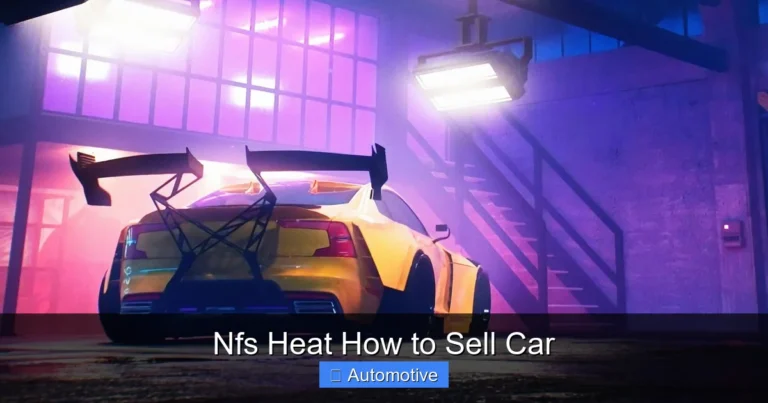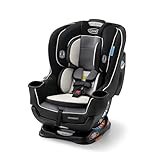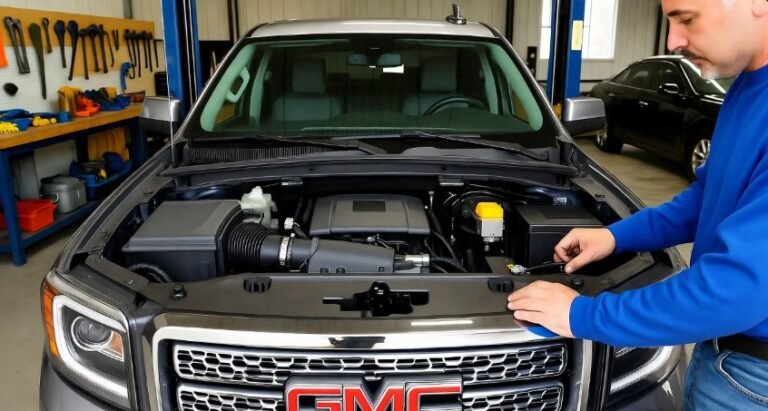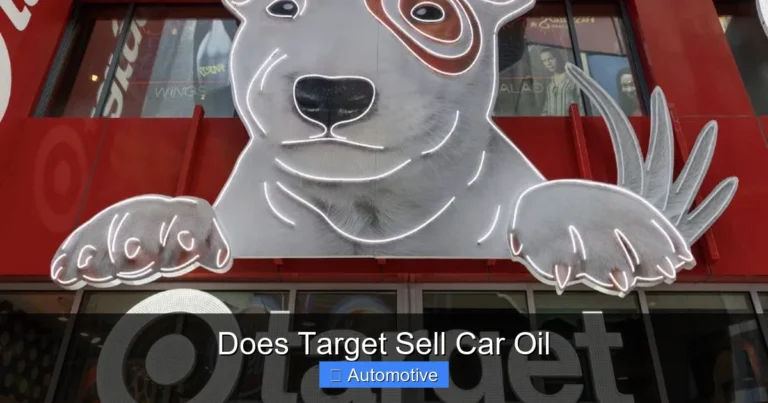Royal Enfield Classic 350 Front Disc Kit Price

The Royal Enfield Classic 350 front disc kit price typically ranges from $75 to $250, depending on the brand, quality, and whether it includes the necessary calipers, master cylinder, and lines. Upgrading your Classic 350’s braking system can significantly enhance safety and performance.
In This Article
- 1 Key Takeaways
- 2 Upgrading Your Royal Enfield Classic 350: Front Disc Kit Insights
- 3 Why Upgrade to a Front Disc Brake on Your Classic 350?
- 4 Understanding the Royal Enfield Classic 350 Front Disc Kit Price: What’s Included?
- 5 Where to Find Your Classic 350 Front Disc Brake Kit
- 6 DIY Installation vs. Professional Fitting
- 7 Calculating the Total Cost of the Upgrade
- 8 Frequently Asked Questions (FAQ)
- 8.1 Q1: Is a front disc brake upgrade legal in the USA on a Royal Enfield Classic 350?
- 8.2 Q2: Can I use a front disc brake kit from another Royal Enfield model?
- 8.3 Q3: How long does it take to install a front disc brake kit on a Classic 350?
- 8.4 Q4: What is the difference between single-disc and dual-disc setups?
- 8.5 Q5: My Classic 350 already has a front disc; can I still upgrade?
- 8.6 Q6: Do I need to change my front wheel or forks for a disc brake conversion?
- 9 Conclusion
Key Takeaways
- Understand common price ranges for a Classic 350 front disc kit.
- Identify factors influencing the cost of your upgrade.
- Learn about the benefits of a disc brake system.
- Discover where to find reliable parts and professional installation.
- Explore options for a complete front disc brake conversion.
Upgrading Your Royal Enfield Classic 350: Front Disc Kit Insights

Riding your Royal Enfield Classic 350 brings a unique sense of freedom and nostalgia. However, as you push your machine on diverse terrains or in varying traffic conditions across the USA, you might notice that the stock braking components could use a boost. Specifically, upgrading the front braking system with a disc kit can dramatically improve your stopping power and overall riding safety. But what’s the deal with the Royal Enfield Classic 350 front disc kit price? It’s a common question for many riders looking to enhance their beloved classic. This guide will break down the costs, components, benefits, and where to source these parts, ensuring you make an informed decision for your ride.
Many riders find themselves researching this upgrade after experiencing the limitations of drum brakes or simply wanting a more modern and responsive braking feel. You’re not alone in this quest for better performance. We’ll walk you through everything you need to know, from understanding what’s included in a kit to estimating the total cost. Let’s get your Classic 350 stopping as confidently as it looks.
Why Upgrade to a Front Disc Brake on Your Classic 350?
The Royal Enfield Classic 350 is a motorcycle celebrated for its timeless design and comfortable cruising capabilities. While it offers a charming riding experience, the braking system is an area where significant improvements can be made, especially for riders who encounter city traffic, varied weather conditions, or simply desire a higher level of safety. A front disc brake upgrade is one of the most impactful modifications you can make.
Enhanced Stopping Power
- Superior Performance: Disc brakes generally offer much stronger and more consistent stopping power than drum brakes. This is crucial for quick, emergency stops, reducing the distance it takes to bring your motorcycle to a halt.
- Heat Dissipation: The open design of a disc brake allows for better airflow, helping to dissipate heat generated during braking. Overheated brakes can lose their effectiveness (brake fade), a risk significantly reduced with a disc system.
Improved Feel and Modulation
- Precise Control: Disc brake systems often provide better feedback through the brake lever. This allows for more nuanced control, enabling you to apply just the right amount of braking force needed.
- Consistency: Unlike drum brakes, which can be affected by moisture or debris, disc brakes tend to perform more consistently across different conditions.
Safety and Confidence
- Reduced Accident Risk: With more effective braking, your ability to avoid potential hazards increases, significantly enhancing your safety on the road.
- Increased Rider Confidence: Knowing you have reliable and powerful brakes can boost your confidence, allowing you to enjoy your ride more fully.
Modernization of the Classic
- Bridging Eras: While preserving the Classic 350’s vintage appeal, a disc brake upgrade incorporates modern technology for a blend of old-school charm and contemporary performance.
- Higher Resale Value: In some markets, a well-executed upgrade like a front disc brake can potentially increase the resale value of your motorcycle.
Understanding the Royal Enfield Classic 350 Front Disc Kit Price: What’s Included?
When you’re looking at the “Royal Enfield Classic 350 front disc kit price,” it’s essential to understand what components are typically included and how they affect the overall cost. A complete kit will ensure you have everything needed for a proper conversion, minimizing the chances of unexpected expenses or compatibility issues.
Key Components of a Front Disc Brake Kit
A comprehensive front disc brake kit for your Classic 350 will generally contain the following parts:
- Brake Disc Rotor: This is the metal disc that attaches to the wheel hub and rotates with it. The brake pads clamp onto this rotor to slow the wheel.
- Brake Caliper: This unit houses the brake pads and pistons. When you pull the brake lever, hydraulic pressure forces the pistons to push the pads against the disc rotor.
- Brake Master Cylinder: Located at the handlebar, this converts the mechanical force of your lever pull into hydraulic pressure. It also holds the brake fluid reservoir.
- Brake Lines (Hoses): These are the reinforced hoses that carry the hydraulic fluid from the master cylinder to the caliper.
- Mounting Hardware: Bolts, washers, and brackets necessary to securely attach the caliper and rotor.
- Brake Pads: The friction material that presses against the rotor. These are usually included, but sometimes sold separately.
Factors Influencing Kit Price
The price of a Royal Enfield Classic 350 front disc kit can vary significantly based on several factors:
- Brand Reputation: Kits from well-known and reputable brands (e.g., Brembo, EBC, specific Royal Enfield aftermarket suppliers) often command higher prices due to their assumed quality, durability, and performance.
- Material and Quality: The quality of materials used for the rotor (e.g., stainless steel grades), caliper construction (e.g., forged aluminum vs. cast), and brake lines (e.g., braided stainless steel vs. rubber) will impact cost. Higher-grade materials offer better performance and longevity.
- Completeness of the Kit: Some “kits” might only include the rotor and caliper, requiring you to source the master cylinder, lines, and other accessories separately, which increases your overall expenditure. A truly “complete” kit will have everything.
- Origin of Manufacture: Parts manufactured in regions with higher production costs might be more expensive than those made elsewhere.
- Aftermarket vs. OEM-style: While Royal Enfield may offer an official upgrade, many aftermarket options provide comparable or even superior performance at different price points.
Typical Price Ranges
To give you a clearer picture, here’s a general breakdown of what you might expect to pay for a Royal Enfield Classic 350 front disc brake kit:
| Kit Type | Estimated Price Range (USD) | What to Expect |
|---|---|---|
| Basic/Budget Kit | $75 – $120 | May include a basic rotor and caliper, potentially with generic brake pads. Might require sourcing additional parts like lines or a master cylinder separately. Quality can be variable. |
| Mid-Range Kit | $120 – $200 | Often includes a better quality rotor (e.g., drilled or slotted), a reliable caliper, good quality brake pads, and possibly braided brake lines. Might be a more complete package. |
| Premium/Performance Kit | $200 – $350+ | Features high-performance components like forged calipers, premium rotors with advanced designs, performance brake pads, and braided stainless steel lines. Often from recognized performance brands. This usually represents a complete, high-quality package. |
It’s important to note that these are ballpark figures. Prices can fluctuate based on sales, the specific retailer, and the exact specifications of the kit. Always check product descriptions carefully to ensure all necessary components for your conversion are included.
Where to Find Your Classic 350 Front Disc Brake Kit
Sourcing the right parts is as crucial as understanding the price. Fortunately, there are several avenues you can explore to find a Royal Enfield Classic 350 front disc kit that fits your needs and budget. Whether you prefer the convenience of online shopping or the hands-on approach of a local store, options abound.
Online Retailers
- Specialty Motorcycle Parts Websites: Many online stores cater specifically to Royal Enfield or classic motorcycle parts. These sites often have detailed product descriptions, customer reviews, and compatibility guides. Examples include sites focused on Indian Motorcycle parts or general powersports retailers.
- Major E-commerce Platforms: Websites like Amazon, eBay, and AliExpress can also list various aftermarket kits. Exercise caution and thoroughly research sellers and product quality when purchasing from these broad platforms. Look for sellers with high ratings and detailed product information.
- Direct from Manufacturers/Distributors: Some high-end performance brake manufacturers or their authorized distributors may sell kits directly through their websites.
Local Motorcycle Shops and Dealers
- Authorized Royal Enfield Dealerships: If you’re looking for genuine Royal Enfield parts or official accessories, your local dealer is the best place to start. They can also offer installation services.
- Independent Motorcycle Repair Shops: Many independent shops that specialize in vintage or European motorcycles are knowledgeable about aftermarket upgrades. They can often source parts for you or recommend reliable brands.
- Custom Bike Builders: If you have a relationship with a custom motorcycle builder, they may have access to specialized parts or kits that aren’t widely advertised.
Things to Consider When Buying
- Compatibility: Double-check that the kit is specifically designed for the Royal Enfield Classic 350 model year you own. Minor variations can exist between different production years.
- Reviews and Ratings: Read customer reviews to gauge the quality, ease of installation, and performance of the kit.
- Return Policy: Ensure the retailer has a clear and fair return policy in case the parts don’t fit or are found to be defective.
- Warranty Information: Understand the warranty offered on the components. A good warranty provides peace of mind.
DIY Installation vs. Professional Fitting
Once you’ve purchased your Royal Enfield Classic 350 front disc kit, the next decision is how to get it installed. Your options are typically to tackle it yourself as a DIY project or to have it professionally fitted by a mechanic.
DIY Installation: The Hands-On Approach
If you’re mechanically inclined and enjoy working on your motorcycle, installing a front disc brake kit can be a rewarding DIY project. However, it requires specific tools and a good understanding of motorcycle mechanics.
Required Tools and Skills
- Basic Mechanic Tool Set: Wrenches, sockets, screwdrivers, pliers.
- Torque Wrench: Essential for tightening fasteners to the manufacturer’s specifications to ensure safety and prevent damage.
- Brake Bleeding Kit: Necessary to remove air from the hydraulic brake lines after installation.
- Brake Fluid: The correct type specified for your motorcycle (e.g., DOT 3, DOT 4). Always refer to your owner’s manual or the kit’s instructions.
- Service Manual: A workshop manual for your specific Classic 350 model is invaluable.
- Patience and Precision: Working with brake systems demands careful attention to detail.
Pros of DIY Installation
- Cost Savings: You save on labor costs, which can be substantial.
- Learning Experience: You gain a deeper understanding of your motorcycle’s systems.
- Satisfaction: The pride of completing a significant upgrade yourself.
Cons of DIY Installation
- Time Investment: It can be time-consuming, especially for a first-time installer.
- Risk of Errors: Incorrect installation can lead to brake failure, a serious safety hazard.
- Tool Investment: You might need to purchase specialized tools if you don’t already own them.
Professional Installation: The Expert Route
For those who prefer to leave complex mechanical work to the experts, professional installation is the way to go. This ensures the job is done correctly and safely by trained technicians.
Pros of Professional Installation
- Expertise and Assurance: Certified mechanics have the knowledge and experience to install brake systems correctly, ensuring optimal performance and safety.
- Time Savings: Professionals can usually complete the installation much faster than a DIYer.
- Warranty on Work: Reputable shops often provide a warranty on their labor and parts they supply.
- Access to Specialized Tools: They have all the necessary equipment for precise installation and bleeding.
Cons of Professional Installation
- Higher Cost: Labor charges will add to the overall expense of the upgrade.
- Less Hands-On Knowledge: You won’t gain the same intimate mechanical understanding as you would with a DIY installation.
Finding a Reliable Mechanic
When choosing a professional installer in the USA, look for:
- Motorcycle-Specific Shops: Especially those experienced with Royal Enfield or similar European/Indian motorcycles.
- Good Reviews and Reputation: Check online reviews and ask for recommendations from other riders.
- Clear Estimates: Get a detailed quote for the labor before work begins.
A common recommendation for brake systems is to consult official resources. For instance, learning about general brake maintenance principles from reputable automotive safety organizations can provide a good foundation, such as the National Highway Traffic Safety Administration (NHTSA) in the USA, which offers extensive safety information for vehicle owners: NHTSA Official Website.
Calculating the Total Cost of the Upgrade
When budgeting for your Royal Enfield Classic 350 front disc kit, it’s important to consider all potential costs beyond just the price of the kit itself. A comprehensive understanding will prevent surprises and ensure you have the funds allocated appropriately.
Breakdown of Potential Costs
| Cost Item | Estimated Range (USD) | Notes |
|---|---|---|
| Front Disc Brake Kit | $75 – $350+ | Varies widely based on brand, quality, and completeness. |
| Installation Labor (if applicable) | $150 – $400 | Depends on the shop’s rates and complexity of the job. |
| Brake Fluid | $10 – $25 | For bleeding the system. |
| Brake Bleeding Kit (if DIY) | $20 – $50 | One-time purchase. |
| Miscellaneous Supplies | $10 – $30 | Rags, cleaning solutions, potentially new crush washers for banjo bolts. |
| New Tire (optional but recommended) | $100 – $250+ | If the existing tire is worn or if wheel removal requires significant effort. |
| Contingency Fund | 10-15% of total | For unforeseen issues or additional small parts. |
Example Scenario:
Let’s assume you purchase a mid-range disc brake kit for $150. If you choose professional installation at a shop charging $250 for labor, and you need to buy about $20 worth of brake fluid and $30 for miscellaneous supplies, your total expenditure would be approximately $450.
Conversely, if you’re a competent DIYer who already owns the necessary tools and manages to find a budget kit for $100, your cost could be as low as $150-$180, primarily for the kit and consumables like brake fluid.
Pro Tip: When replacing brake components, it’s an excellent opportunity to inspect your wheel bearings and tire condition. Addressing these at the same time can save you a future trip to the shop and potentially more labor costs.
Frequently Asked Questions (FAQ)
Q1: Is a front disc brake upgrade legal in the USA on a Royal Enfield Classic 350?
In most states across the USA, modifying your motorcycle’s braking system with a compliant disc brake kit is legal, provided it meets or exceeds the original safety standards. However, local regulations can vary. It’s always a good idea to check with your state’s Department of Motor Vehicles (DMV) or equivalent authority if you have concerns about legality or inspections.
Q2: Can I use a front disc brake kit from another Royal Enfield model?
While some parts might be interchangeable, it’s generally not recommended without thorough research. Kits are often model-specific due to differences in wheel hub design, suspension geometry, and mounting points. Always ensure the kit is advertised as compatible with the Royal Enfield Classic 350. If unsure, consult the manufacturer or a reputable vendor.
Q3: How long does it take to install a front disc brake kit on a Classic 350?
For a professional mechanic, the installation typically takes between 2 to 4 hours. For a DIYer with some experience, it could range from 4 to 8 hours or more, depending on familiarity with the process and any unexpected challenges.
Q4: What is the difference between single-disc and dual-disc setups?
A single-disc setup uses one brake rotor and caliper on the front wheel, while a dual-disc setup uses two. A dual-disc setup offers even greater stopping power and redundancy but is significantly more complex and expensive to install, often requiring a different triple tree and wider forks. For the Classic 350, a single-disc upgrade is the most common and practical choice.
Q5: My Classic 350 already has a front disc; can I still upgrade?
Yes, if your Classic 350 already came equipped with a front disc brake from the factory (some later models or specific variants might), you can still upgrade the components for better performance. This would involve replacing the existing rotor, caliper, master cylinder, and lines with higher-performance aftermarket parts. The price would then reflect the cost of these premium components rather than a full conversion kit.
Q6: Do I need to change my front wheel or forks for a disc brake conversion?
Typically, for a standard Royal Enfield Classic 350 front disc brake kit, you do not need to change the front wheel or forks. The kits are designed to bolt onto the existing wheel hub and mount to the standard fork leg. However, if you were considering a dual-disc setup or a very high-performance system, modifications to the forks or a different wheel might be necessary, which would significantly increase the cost and complexity.
Conclusion
Enhancing your Royal Enfield Classic 350 with a front disc brake kit is a wise investment in safety, performance, and confidence. The Royal Enfield Classic 350 front disc kit price can range from around $75 for basic components to over $350 for premium systems. When budgeting, remember to factor in potential costs for professional installation, brake fluid, and any necessary tools if you plan a DIY approach. By understanding the components involved, the factors affecting price, and where to source your parts, you can confidently upgrade your Classic 350’s braking system and enjoy a safer, more responsive ride.

